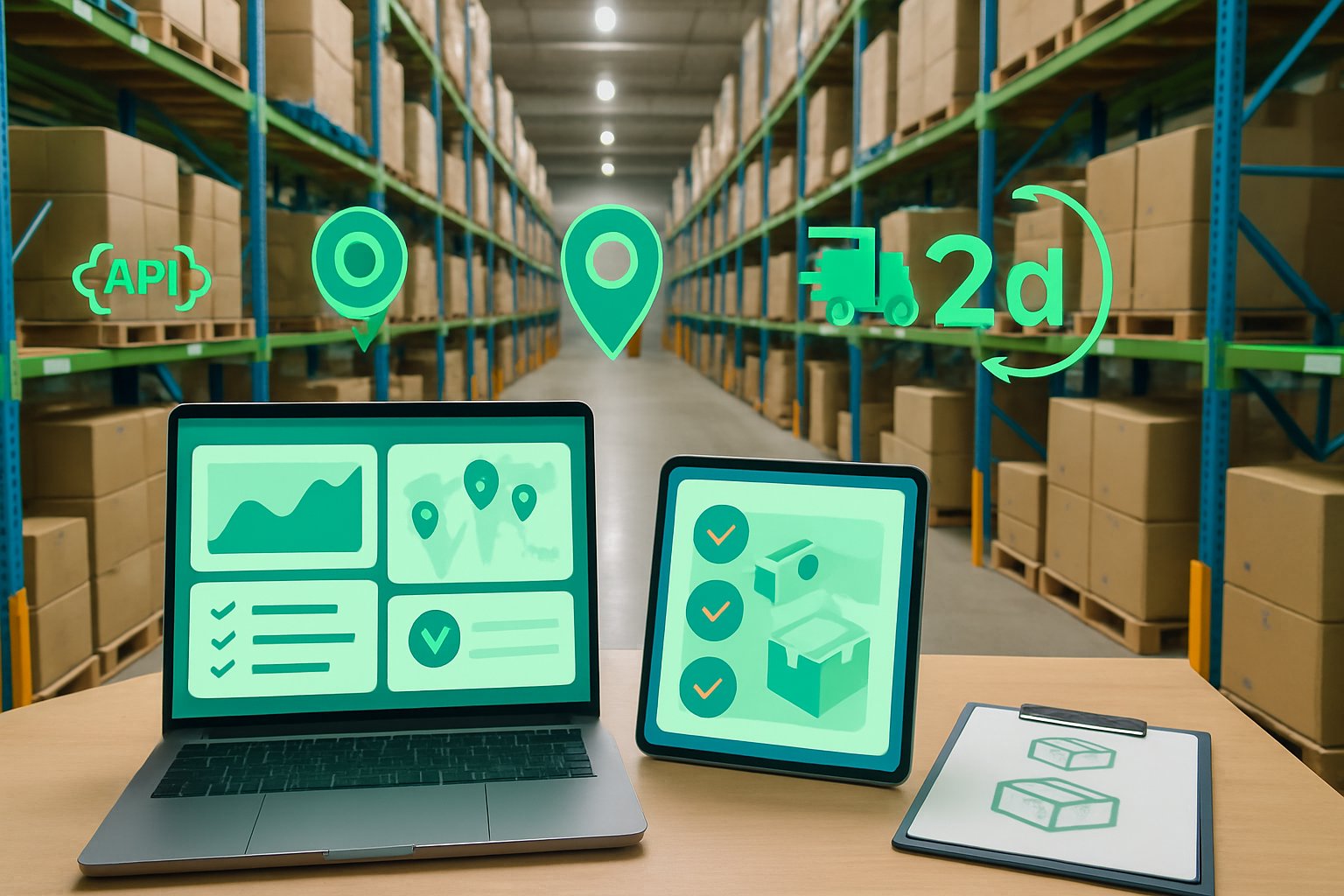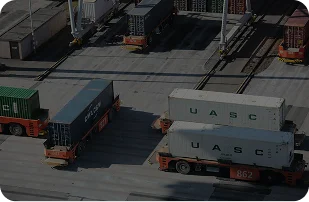Selecting a Fulfillment Provider: Steps to Making the Right Choice

Choosing the right fulfillment company can reduce your operational costs by 15-25% while improving delivery speeds and customer satisfaction. With over 21,000 fulfillment providers in the market, making informed decisions about your fulfillment partner directly impacts your business growth and customer experience. Poor fulfillment partnerships cost companies 37% of their customers after just one bad delivery experience, making provider selection one of your most critical business decisions.
The right fulfillment provider transforms your logistics operations from a cost center into a competitive advantage, handling everything from inventory management to ensuring timely delivery while you focus on growing your business.
What Modern Fulfillment Providers Actually Do

Today’s fulfillment services extend far beyond basic warehousing. A comprehensive fulfillment company manages your entire fulfillment process from receiving inventory to delivering products to your customers’ doors.
Core warehouse fulfillment services include receiving your products, storing them in organized warehouse space, picking items when orders arrive, packing them securely, and coordinating with shipping companies for delivery. Modern fulfillment operations integrate sophisticated technology, including Warehouse Management Systems (WMS), order management systems, and real-time tracking capabilities.
Value-added fulfillment solutions include returns management, kitting services for bundled products, specialized packaging for fragile items, and integration with various sales channels. Many fulfillment centers now offer branded packaging, promotional inserts, and international shipping capabilities that enhance customer experience while expanding your market reach.
The best fulfillment providers operate as true logistics partners, offering transparent pricing and flexible services that scale with your business needs. They handle reverse logistics, manage inventory across multiple online marketplaces, and provide detailed analytics to help you make informed decisions about your supply chain operations.
How To Select a Fulfillment Provider: Evaluation Criteria
Technology & Integration Capabilities
Technology integration forms the backbone of effective ecommerce fulfillment. Your fulfillment partner must integrate seamlessly with your existing ecommerce platforms, whether you’re using Shopify, WooCommerce, Amazon, or other online stores.
Look for providers offering real-time API connections that automatically sync inventory levels, order data, and tracking information. This eliminates manual data entry and reduces the risk of overselling. The best fulfillment providers maintain order accuracy rates above 99.5% through barcode scanning systems and automated quality control processes.
Advanced software capabilities should include mobile-accessible dashboards where you can monitor inventory, track order status, and access detailed reporting. These analytics help optimize your fulfillment operations and improve customer satisfaction through better visibility into your supply chain.
Geographic Coverage & Network Design

Strategic warehouse location significantly impacts shipping costs and delivery times. Fulfillment centers positioned across major regions can reduce shipping times and costs by 30-40% compared to single-location operations.
The most effective fulfillment networks include locations in California for West Coast coverage, Texas for Central regions, and the Northeast for East Coast distribution. This positioning enables most businesses to reach 90% of customers with two-day ground shipping, reducing both shipping costs and customer expectations for fast shipping.
Single vs. Multi-Provider Strategy: Smaller businesses typically benefit from single fulfillment partners due to management simplicity and volume concentration for better pricing. High-volume businesses often use multiple providers for geographic diversification and risk reduction, though this requires more complex inventory management.
Pricing Structure & True Total Cost
Understanding the complete pricing structure prevents unexpected costs that can derail your budget. Most fulfillment companies charge across multiple categories: receiving fees ($0.35-$0.65 per item), storage costs ($15-40 per pallet monthly), and pick and pack fees ($3-8 per order).
Hidden fees represent a major concern when selecting a fulfillment provider. Common additional charges include setup fees, monthly minimums, peak season surcharges, and dimensional weight adjustments. Request detailed pricing breakdowns and ask specifically about any additional charges that might apply to your business model.
Transparent pricing should include all potential costs upfront, allowing you to calculate the true total cost across different order volume scenarios. The cheapest option often leads to poor service quality and unexpected fees that exceed any initial savings.
Scalability & Peak Capacity
Your fulfillment partner should accommodate business growth without requiring disruptive transitions. Peak season capacity represents a critical consideration, as order volumes typically increase 300-400% during October through December.
Evaluate how potential providers handle seasonal fluctuations, their staffing flexibility, and contingency plans for high-demand periods. The best fulfillment providers demonstrate experience helping similar businesses scale and provide references from companies that have grown significantly while maintaining their partnership.
Growth-friendly contracts should offer flexible terms that adjust to changing business needs without penalizing success. Avoid long term contracts with restrictive clauses that limit your ability to adapt as your business evolves.
Vetting the Provider: Proof and Performance
Track Record, SLAs, and Benchmarks
Request specific performance metrics including order accuracy rates, on-time shipping percentages, and damage rates. Top-tier fulfillment providers maintain order accuracy above 99.5%, ship orders within committed timeframes 98% of the time, and keep damage rates below 0.5%.
Reference checking provides invaluable insights into real-world performance. Ask for contacts from current and former clients, particularly businesses similar to yours in size and product category. Industry experience matters significantly – providers with proven experience in your specific product category understand unique handling requirements and customer expectations.
Financial stability indicators help confirm your fulfillment partner will remain viable throughout your relationship. Research the company’s years in operation, client retention rates, and any recent significant changes in leadership or operations.
Customer Service & Communication Standards

Responsive customer service becomes vital when issues arise, particularly during peak seasons or unexpected disruptions. Top providers typically respond to urgent issues within 2-4 hours during business hours.
Account management structure affects your day-to-day experience significantly. Understand whether you’ll have a dedicated account manager, how communication flows within their organization, and what escalation procedures exist for urgent problems.
Problem resolution processes reveal how effectively a fulfillment provider handles unexpected challenges. Ask about their protocols for addressing inventory discrepancies, shipping delays, damaged products, and system outages.
Red Flags and Common Selection Mistakes

Choosing based solely on the lowest price without considering service quality represents the most common and costly mistake. While pricing matters, the cheapest option often leads to poor service, hidden fees, and operational problems that far exceed any initial savings.
Providers who are evasive about pricing details, performance metrics, or technology capabilities should raise immediate concerns. Transparent providers willingly share detailed information about their operations, pricing structure, and performance track record.
Poor communication during the sales process often indicates future service problems. If a provider is slow to respond, provides incomplete information, or seems disorganized during the evaluation process, these issues typically worsen after signing a contract.
Watch for overly complex contracts with difficult exit clauses that can trap businesses in unsatisfactory relationships. Review contract terms carefully, paying particular attention to termination procedures, inventory retrieval policies, and any penalties for early contract termination.
Decision Playbook and Rollout
Scorecard & Pilot
Create evaluation scorecards with weighted criteria to eliminate bias and confirm consistent comparison across multiple providers. Assign importance weights to factors such as pricing (25%), technology capabilities (20%), geographic coverage (15%), service quality (20%), and scalability (20%) based on your specific business priorities.
Pilot program setup allows you to test a provider’s capabilities before committing to a full partnership. Start with a limited product selection to evaluate performance under real-world conditions. Establish clear success metrics including order accuracy, shipping speed, customer satisfaction, and cost performance.
Contract Terms & Liability
Contract negotiation represents your final opportunity to secure favorable terms and protect your business interests. Key terms to negotiate include pricing escalations, performance guarantees, termination clauses, and liability provisions.
Verify that potential providers carry appropriate insurance coverage for your inventory value and understand their liability policies for lost, damaged, or stolen products. Don’t hesitate to request modifications to standard contract terms that don’t align with your business needs.
Cutover Timeline & Inventory Transfer
Switching fulfillment providers typically requires 4-8 weeks for complete transition. The timeline includes contract negotiation (1-2 weeks), system integration and testing (1-2 weeks), inventory transfer planning (1 week), and physical inventory movement (1-3 weeks depending on volume).
Plan inventory transfer carefully to minimize business disruption. Work with both your current and new providers to coordinate the physical movement of products, confirming adequate insurance coverage and tracking throughout the transfer process. Consider transferring inventory in phases based on product velocity to maintain order fulfillment continuity.
Questions To Ask in Vendor Presentations
Focus on specific performance metrics, technology capabilities, and operational procedures:
- What are your order accuracy rates, on-time shipping percentages, and peak season performance?
- How does your technology integrate with our ecommerce platforms and order management systems?
- What is your complete pricing structure, including all potential fees and charges?
- Can you provide references from businesses similar to ours in size and product category?
- How do you handle inventory discrepancies, shipping delays, and system outages?
- What are your capabilities for returns processing and reverse logistics?
- How do you manage peak season capacity and staffing flexibility?
How Innovative Warehouse Solutions Can Help
At Innovative Warehouse Solutions, we understand that selecting the right fulfillment partner can make or break your business operations. Our approach focuses on transparency, customer-centric service, and proven technology that grows with your business.
We offer comprehensive fulfillment solutions without hidden fees or complex contracts. Our integrated software provides real-time visibility into your inventory and order processing, while our strategic location enables efficient shipping across major markets.
Ready to explore how the right fulfillment partnership can transform your business operations? Contact us today for a personalized consultation. Our fulfillment experts will help you evaluate your specific needs and develop a customized solution that aligns with your business goals and growth objectives.








































